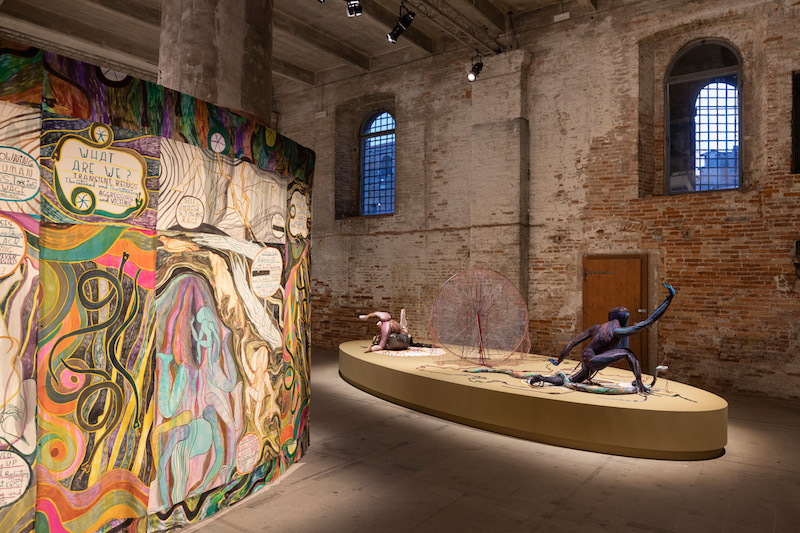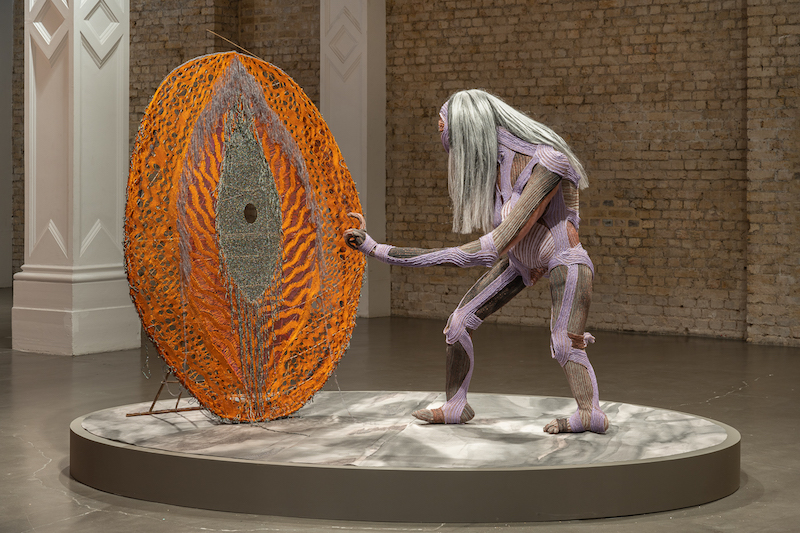by Alison Hugill // Sept. 8, 2023
This article is part of our feature topic Privacy.
As we stand at the intersection of technology, artistry and the ever-expanding boundaries of our personal spaces, it becomes increasingly vital to explore the intricate relationship between privacy and the arts. Art has always been a reflection of society, and today’s artists are grappling with questions about the preservation of individuality, the sanctity of intimate moments and the implications of our digital footprints.
ChatGPT wrote that introductory paragraph for me, based on my prompt to “write a Letter from the Editor of an art magazine about privacy.” And it just kept going, with more and more (alarmingly accurate) platitudes, until I explicitly told it to “stop generating” more sentences.
OpenAI, since launching ChatGPT, have been the center of criticism about their data retention policies, which allow the company to collect and use a wide range of data, including content from our conversations with the chatbot itself. Just this week, the Guardian became the latest news agency to block OpenAI from trawling its content for use in its products. “The scraping of intellectual property from the Guardian’s website for commercial purposes is, and has always been, contrary to our terms of service,” they reported.
With the spread of this new technology, questions around content trawling, data protection and privacy have once again become major concerns across all fields, with a renewed attention to creative authorship and intellectual property in the arts. Launching this new topic, we hope to consider how artists are dealing with the multi-dimensional implications of “privacy” today, whether on a personal, institutional or commercial level.
In an article by Adela Lovric, artist Mimi Ọnụọha’s project ‘Missing Data’ (2015-2022) will be considered for the way in which certain important information becomes hidden or unseen, based on what data is privileged by those collecting it. Ọnụọha refers to the blank spots in otherwise data-saturated areas, in order to reveal hidden social biases and indifferences. Looking in particular at data around police brutality, Ọnụọha explains that “just as the presence of data benefits someone, so too does the absence.” In Germany, we often think of data collection as it relates to the strict privacy laws that are in place here. However, it’s relevant to keep in mind that certain data can be used to prove the existence of societal injustices, if collected properly. As Ọnụọha notes: “To collect, record and archive aspects of the world is an intentional act, one that typically benefits those who have the power to decide what should be collected.”

Emma Talbot, installation view at Arsenale // Courtesy of the artist, copyright LaBiennale di Venezia
In another piece for this topic, contributor Aoife Donnelan will interview British artist Emma Talbot, whose exhibition ‘In the End, the Beginning’ opens at Kindl during Berlin Art Week this month. Through animation, painting, drawing and sculpture, Talbot’s practice explores the inner landscapes of private thoughts. When asked about the faceless characters in her work, which stand in for more general concepts and concerns, Talbot replied: “I think of it as me from the inside…it became this faceless figure because from the inside, I just can’t see my face. It started to become a universal figure, like an avatar.” Picking up on communal processes through her own private narrative, the artist wants to create a neutral vehicle through which personal existential questions can become fictionalized.

Emma Talbot: ‘The Age/L’Età,’ installation view at Whitechapel Gallery // Courtesy of the artist, photo by Damian Griffiths
Nadia Egan interviews Berlin-based, Greek photographer Spyros Rennt, whose images often depict queer youth culture. As Egan writes, “in an era where privacy is a precious and rare commodity, ethical considerations often arise regarding the act of capturing individuals in their most vulnerable states.” For Rennt’s latest publication, ‘Corporeal,’ he presents a series of over 100 images portraying his circle of friends and beloveds, taken in intimate settings during the pandemic. In their conversation, Egan and Rennt discuss the fine line between capturing authentic moments and preserving the dignity and privacy of the photos’ subjects.

Spyros Rennt: ‘Neukölln winter afternoon,’ 2022 // Courtesy of the artist
The topic of privacy is far-reaching and can be interpreted on many different levels. As ChatGPT aptly noted in its interminable wall of text, we are dealing with the very real ethical implications of digital surveillance, but also the “power of art to bridge the gap between isolation and connection.” On the other side of a global pandemic that forced many of our working tools and social processes to move online, there’s been a twofold experience of increased anxiety over one’s “digital footprint” and a renewed desire to share intimate moments, on and offline. With this topic, we hope to expose the many different ways that privacy is understood in the context of art-making, including but also beyond the proliferation of AI.






















